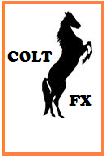[a video of this post is at the bottom of the page]
The IMF set the tone as Christmas week opened with a warning against the dangers of inadequate fiscal stimulus. President-Elect Barack Obama followed through with a promise that his stimulus package would create or save half a million more jobs than had been previously projected. With the price-tag on the stimulus package at $800B and rising, the euro (see eur chart) started the week testing resistance at 1.41. It then fell back below 1.40, perhaps on the realization that things were also looking grim in euro-land; a fact amply illustrated by a report warning that Germany’s economy could shrink by 2.7% in 2009.
Tuesday’s US data brought more bad news with home sales continuing to disappoint but the EUR settled into a 100-pip range in the run up to Christmas Day. Trading resumed on Friday and while most of Europe was still closed for the holiday, the euro rose to test 1.41 once again and closed the week at 1.4059. The following Monday saw the euro smash through 1.41 to hit 1.4350 as the escalating situation in the Middle East renewed concerns of a spike in the price of oil. EUR/USD fell back again as US markets opened and the dollar eventually closed the day slightly up on the euro. Tuesday saw US consumer confidence fall to record lows. However, fundamental news had little impact on this holiday market and the pair fell to below 1.39 for the first time during the holiday period to close the week at 1.3851Sterling (see GBP chart) fell some 27% against the dollar in 2008 and managed to hit a fresh yearly low in the final week. Britain’s Q3 GDP was revised down to -0.6%, the worst contraction since 1990, making further Bank of England rates cuts very likely on January 8th. The pair went on to range between 1.48 and 1.4650 over Christmas, before breaking on the 29th to test 1.44,a level it tested twice more before the week was out. It rallied to 1.47 during thin trading on New Year’s Eve and closed on the first day of trading in 2009 at 1.4599.
USD/JPY (chart above) spent most of the holidays trading within 90 – 91. An upside breakout followed by a classic pullback saw the dollar hit 92.40 before closing the week at 92.26
USD/CHF fell on Middle East tension and the franc was widely reported as having regained its safe-haven status. It formed a morning star reversal pattern at 1.0400 and rose to close the week at 1.0828.
This week is the first full trading week after the holidays, traders all over the world are returning to their desks and a full-bodied trading week is anticipated. It is also a week cram-packed with economic data. In the US on Tuesday, there’s more housing numbers, the services PMI and the minutes of the meeting where the Fed cut close to zero. The focus then turns to employment with ADP jobs data on Wednesday, the weekly review of unemployment claims on Thursday and on Friday we’ve got the unemployment rate and the much-anticipated Non-Farm payrolls.
The euro-zone sees consumer prices and services PMI on Tuesday. We’ve German factory orders on Thursday and French industrial production on Friday. Friday also sees the release of retail sales data for Germany and the zone as a whole.
All eyes will be on UK interest rates on Thursday. A cut of at least 50bps is widely anticipated with many market analysts pricing in a 75bps cut. Tuesday sees more housing data and Services PMI and Friday has Producer Prices.
Israel launched a ground offensive into the Gaza strip this weekend and traders will need to keep close tabs on how the situation affects oil prices and, in consequence, dollar strength.
EUR/USD resistance: 1.4050; support: 1.35.
GBP/USD resistance: 1.4700; support at 1.41.
USD/JPY resistance: 94; support: 91











No comments:
Post a Comment